Artificial intelligence technology has been quietly integrated into every corner of our lives in recent years: common functions such as intelligent voice customer service, AI anchors, and voice-to-text have greatly improved the convenience of work and life. Many AI face-changing, AI painting apps or small programs are also easy to use, allowing ordinary people to realize their dreams of becoming a star or a painter in one second. ChatGPT, a chat tool developed in the United States at the end of last year, became very popular around the world once it was released. However, technology is always a double-edged sword. Following the "AI Stefanie Sun" cover incident, recently, a man in Fujian was defrauded of 4.3 million yuan by a scammer using AI face-changing and onomatopoeia technology to pretend to be his friend and defrauded him of 4.3 million yuan through a 10-minute video chat. , making people think more deeply: How should AI technology serve mankind? What legal risks will technology misuse bring, and what kind of trust crisis will it cause?
1. AI “creation” has the risk of infringement
The original intention of the development of AI technology is to improve human life. In recent years, its processing of videos, audios, images, and text has gradually moved from the laboratory to the public, changing people's production and lifestyle. It has a wide range of application scenarios and diverse gameplay. It has extraordinary performance in reducing costs, increasing efficiency, and liberating productivity.
Take AI video technology as an example. In the past, a certain actor's misconduct may have caused the entire work in which he participated to be unable to be broadcast, causing financial losses to the filming party. Through AI technology, the actor in question can be "face-changed" after the filming of the work is completed, and the loss can be stopped in time. In terms of special effects production, in the past, AI was only an assistant to special effects artists, but now there are multiple softwares that can generate blockbuster special effects in a "fool-like" way. Movie special effects have entered the "civilian era", and ordinary people can also have the wonderful experience of making their own special effects. In addition, AI technology can also create videos "out of nothing" based on only copywriting without adding other pictures and video materials, meeting the more diversified needs of creators.
During the Spring Festival this year, a set of pictures of fluffy cartoon rabbits with red backgrounds became popular in the circle of friends and became many people’s screensaver wallpapers and avatars. These pictures were all generated by AI drawing technology. Many AI drawing tools have emerged in the fields of design and painting. Users only need to enter text commands to achieve "drawings from text" and get a good work in a few minutes, which greatly improves production efficiency. However, this may have an impact on the image copyright industry.
Generally speaking, if you want to use a copyrighted image, including paintings and photography, you need to pay to use it legally. Otherwise, copyright infringement cases will occur, especially in the field of self-media related disputes. Some self-media accounts have used other people's copyrighted images as illustrations in advertisements without permission, and have been sued by the rights holders for compensation. Some copyright agencies may also deliberately conceal and induce others to use copyrighted images, etc. to obtain the facts of infringement. Later, they ask for compensation from the other party, force them to sign an annual contract or file a lawsuit, turning rights protection into a means of profit-making. The emergence of AI drawing technology can, to a certain extent, help self-media operators control costs and reduce the risk of lawsuits caused by improper use of picture works. On the other hand, it can also disrupt the market order of the commercial rights protection industry chain of picture works. Behavior constitutes a blow.
The above-mentioned AI video, AI drawing technology, and the "all-purpose" chat tool ChatGPT that can help people write papers, emails, scripts, poems, and codes are all specific applications of deep synthesis technology, regardless of whether people have professional backgrounds and related Experience, as long as you have simple expression skills, you can "create" with the help of these AI tools. So, what is the copyright ownership of these generated videos, pictures, and text works? In fact, my country’s copyright law does not clearly stipulate the copyright ownership of works generated using AI. However, many AI tools have set corresponding usage rules for the ownership of the rights of the generated works. Some software also has rules for free users and paid users. The ownership of the rights of the work and whether it can be commercialized are distinguished, which can be regarded as the two parties reaching an agreement on the copyright issues of the generated work, and the user's disposal of the work should comply with the agreement.
In addition, some people also question whether the works generated by AI through learning and imitating massive samples will infringe on the legal rights of the copyright holders of prior works? In this regard, the judge of the Beijing No. 4 Intermediate People's Court believed that it depends on whether the degree of reference and use of the AI work's work on other people's works constitutes substantial similarity. If it is just a study and imitation of other people's creative techniques, rules, techniques, and styles, it is difficult to identify it as "plagiarism." However, if it is a mechanical copying and splicing of other people's works, it may constitute infringement. Therefore, on the basis of using AI to obtain inspiration and creativity in the early stage, creators should inject their own ideas, perspectives, humanistic emotions, etc. to substantively change the content and make the ownership and subsequent use of the work more secure.
2. AI “face-changing” may infringe on portrait rights
The iteration of technology has made many impossible things possible, as is the case with the "AI Stefanie Sun" that has exploded on the Internet recently. Many creators use Stefanie Sun's timbre to train AI and use synthesized timbres to cover the works of other singers. Stefanie Sun, who has not released an album for many years, instantly has more than a thousand cover songs. Even she herself said that "human beings cannot surpass it." Just around the corner." So, are these AI covers legal?

In fact, the singer's singing voice and timbre itself do not fall within the scope of protection of copyright law. However, Article 1023 of the Civil Code stipulates that the protection of natural persons' voices shall be governed by the relevant provisions on the protection of portrait rights, that is to say , shall not use information technology means to forge to infringe other people's rights to sound.
In addition, some people claim exemption on the grounds of "for entertainment only and not for commercial use". However, according to the provisions of Article 42 of the Copyright Law, sound recording producers use musical works that have been legally recorded as sound recordings by others to make sound recordings. You may do so without the permission of the copyright owner, but you must pay remuneration in accordance with regulations. The disclaimer is not a reason to prevent copyright infringement. Moreover, some people will receive platform revenue or user rewards after uploading AI cover works. Although they do not have to pay to listen, the producers do gain income from this, so it is difficult to define their works as fair use under the copyright law. "Free show".
It can be seen that although AI technology is good, it must be guarded against abuse. There was a time when celebrities such as "Yang Mi" and "Reba" frequently appeared in the live broadcast room to bring goods, and sharp-eyed netizens saw through it at a glance. It turned out that these were AI face-changing technologies, and some people tried to wear a "star face" Attract more users to enter the live broadcast room. In doing so, although there is traffic, it also infringes on the legitimate rights and interests of others. According to Article 1019 of the Civil Code, no organization or individual may infringe on the portrait rights of others by vilifying, defacing, or using information technology means to forge. Without the consent of the portrait right holder, the portrait of the portrait right holder shall not be produced, used, or disclosed, unless otherwise provided by law. Without the consent of the portrait right holder, the right holder of the portrait work shall not use or disclose the portrait of the portrait right holder in any manner such as publishing, copying, distributing, renting, or exhibiting. The portraits of celebrities have more commercial value than ordinary people. Illegally "transplanting" celebrity portraits onto anchors is equivalent to obtaining celebrity effects at zero cost. It not only infringes on the portrait rights of the celebrities whose faces have been changed and the economic interests they represent, but also affects Other operators who pay to use celebrity portraits in accordance with the law are also obviously unfair.
In addition, some netizens have uploaded their own photos and replaced the faces of actors in film and television dramas with their own faces. This behavior also carries legal risks. According to the legal provisions of portrait rights, "reverse face swapping" is also an act of infringing on other people's portrait rights by forging information technology means. In particular, face-changing characters in film and television dramas and uploading videos to the Internet may also constitute an infringement of copyrights such as the right to disseminate film and television information online and the right to protect the integrity of the work. The relevant copyright holders may reserve the right to pursue their liability and obtain compensation.
The judge of the Beijing No. 4 Intermediate People’s Court reminded that “face-changing” may also trigger other disputes over personality rights. A video blogger recently used AI face-changing technology to replace the face of the male protagonist in an intimate scene in a film and television drama with his own, causing discomfort to many netizens and fans of the actor. The actors' intimate scenes in the play are performance needs, which are reflected in the contract and script. They are a necessary interpretation of the plot based on the actor's knowledge and consent. However, the blogger’s behavior not only constituted rudeness and offense to the actress, but also may be considered as “violating another person’s will by means of language, writing, images, physical behavior, etc.” as stipulated in Article 1010 of the Civil Code. "Others commit sexual harassment" and bear civil liability. What's more, in order to "create pornographic rumors" or illegally make profits, the portraits of female celebrities or ordinary women are changed into pornographic videos, which seriously infringes on the reputation rights of others and causes great mental pain to the parties concerned. They should be punished according to law. punish.
3. Focus on preventing the use of AI to commit crimes
While people are still exploring the various conveniences of AI, criminals have already focused on this technology. According to reports, Mr. Guo’s WeChat “friend” from Fujian contacted him via video and said he wanted to borrow a deposit of 4.3 million yuan. Based on his trust in the video call, Mr. Guo completed the transfer within 10 minutes and soon discovered that he had been cheated. It turns out that the scammer first stole the WeChat account of Mr. Guo's friend, learned about Mr. Guo's financial strength, and then obtained the "friend's" face, voice and other information for later synthesis, and finally completed the fraud, making it difficult to detect. Originally, remote communication was created for convenience, but the misuse of AI technology has reduced people's trust in online communication. Just imagine, if someone uses AI technology to produce illegal videos, fake news, etc., this will undoubtedly be detrimental to the social trust system.

Integrity is crucial to ensuring transaction security, but improper use of deep synthesis technology may increase the risk of default, especially in the field of transactions based on the intellectual achievements of the other party. When the creator's work is text or pictures generated through AI tools such as ChatGPT and Midjourney, the originality of the work may be flawed. For example, in terms of copyright licensing or transfer contracts, unless both parties to the contract have reached an agreement on the use of AI for creation, such synthesized works may constitute defective performance due to insufficient originality, or may have rights defects due to infringement of other people's copyrights, giving the licensee The party or the transferee may cause unnecessary losses in the subsequent commercial use of the work.
In addition, the accessibility of AI technology will also increase moral hazard. The judge of the Fourth Intermediate People's Court of Beijing said that compared with the workload required for individuals to carry out independent intellectual work, the time, economic and energy costs are far different between the workload required to complete work using AI. If writing, painting, etc. Practitioners in the field rely heavily on AI to complete work without informing paying customers, and still quote according to the standards completed independently by individuals. The order of healthy competition in related industries will be broken, and professional ethics will also be in crisis. Of course, there are also academic fields where the stakes are high. It is nothing new for students to use artificial intelligence tools such as ChatGPT to assist in writing papers. However, at this stage, papers created by AI still have many shortcomings, such as lack of novelty, logical expression, and even references. It may be that AI has fabricated it randomly. Not only does such academic achievement have no value at all, it actually aggravates the phenomenon of academic misconduct.
In the face of related risks, we must not only make remedial measures, but also take precautions. The "Internet Information Services Deep Synthesis Management Regulations" promulgated by the Cyberspace Administration of China were officially implemented on January 10 this year. They mainly stipulate the obligations of deep synthesis service providers, which require deep synthesis service providers to provide intelligent dialogue and synthesized human voices. , face generation, immersive simulation scenes and other services that generate or significantly change the function of information content should be clearly marked to avoid confusion or misunderstanding by the public. It can be seen that to prevent risks, we must first start with technology developers and service providers.
For individuals, the protection of biometric information such as faces, fingerprints, and voices, as well as personal information such as ID cards, bank cards, and social media accounts, has become increasingly important. If an acquaintance requests a transfer online, their identity must be confirmed through multiple verifications. This is especially true for the elderly who do not know much about AI technology.
Photo courtesy: Visual China
Source: Beijing Daily Client Reporter: Yuan Jing
Process Editor: u060
The above is the detailed content of Judge reminds - Be wary of the legal risks of misuse of AI technology. For more information, please follow other related articles on the PHP Chinese website!
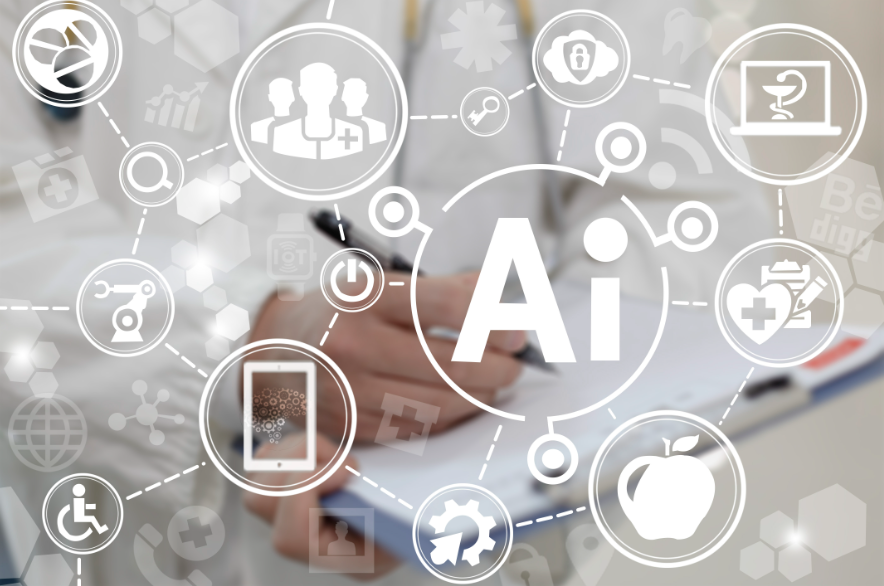 一个适合程序员的 AI创业思路Apr 09, 2024 am 09:01 AM
一个适合程序员的 AI创业思路Apr 09, 2024 am 09:01 AM大家好,我卡颂。许多程序员朋友都希望参与自己的AI产品开发。我们可以根据"流程自动化程度"和"AI应用程度"将产品的形态划分为四个象限。其中:流程自动化程度衡量「产品的服务流程有多少需要人工介入」AI应用程度衡量「AI在产品中应用的比重」首先,限制AI的能力,以处理一张AI图片应用,用户在应用内通过与UI交互就能完成完整的服务流程,从而自动化程度高。同时,“AI图片处理”重度依赖AI的能力,所以AI应用程度高。第二象限,是常规的应用开发领域,比如开发个知识管理应用、时间管理应用、流程自动化程度高
 家电行业观察:AI加持下,全屋智能将成为智能家电未来?Jun 13, 2023 pm 05:48 PM
家电行业观察:AI加持下,全屋智能将成为智能家电未来?Jun 13, 2023 pm 05:48 PM若是将人工智能比喻为第四次工业革命的话,那么大模型便是第四次工业革命的粮食储备。在应用层面,它使工业界得以重温1956年美国达特茅斯会议的设想,并正式开启了重塑世界的序幕。根据大厂定义,AI家电是具备互联互通、人机交互和主动决策能力的家电,AI家电可以视作是智能家电的最高形态。然而,目前市面上AI加持的全屋智能模式是否能成为未来行业的主角?家电行业是否会诞生新竞争格局?本文将从三个方面来解析。全屋智能为何雷声大,雨点小?资料来源:Statista、中安网、艾瑞咨询、洛图科技、全国制锁行业信息中心
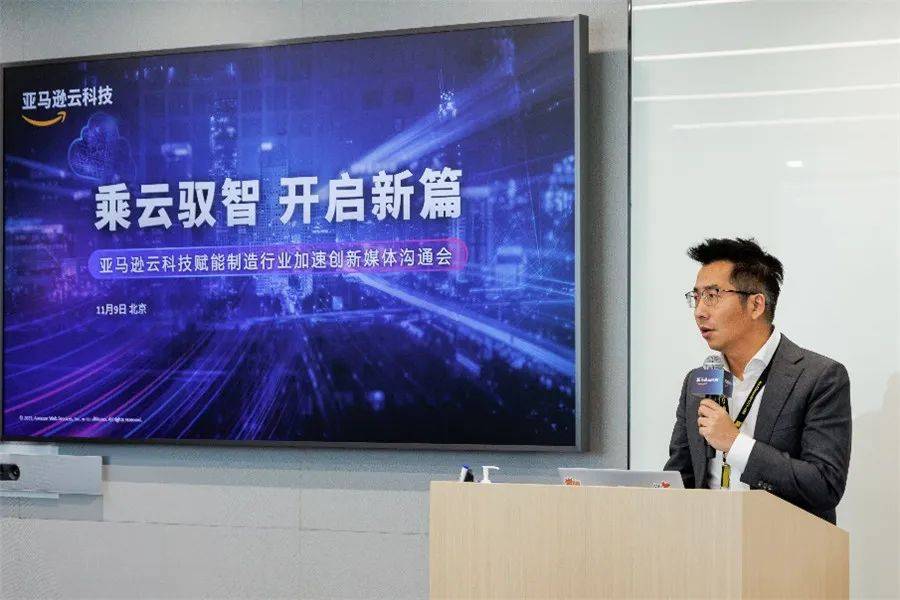 生成式AI技术为制造企业降本增效提供强大支持Nov 21, 2023 am 09:13 AM
生成式AI技术为制造企业降本增效提供强大支持Nov 21, 2023 am 09:13 AM在2023年,生成式人工智能(ArtificialIntelligenceGeneratedContent,简称AIGC)成为科技领域最热门的话题,毫无疑问那么对于制造行业来说,他们应该怎样从生成式AI这项新兴技术中获益?广大正在实施数字化转型的中小企业,又可以由此获得怎样的启示?最近,亚马逊云科技与制造行业的代表一同合作,就中国制造业目前的发展趋势、传统制造业数字化转型所面临的挑战与机遇,以及生成式人工智能对制造业的创新重塑等话题进行了分享和深入探讨生成式AI在制造行业的应用现状提及中国制造业
 华为余承东表示:鸿蒙可能拥有强大的人工智能大模型能力Aug 04, 2023 pm 04:25 PM
华为余承东表示:鸿蒙可能拥有强大的人工智能大模型能力Aug 04, 2023 pm 04:25 PM华为常务董事余承东在今天的微博上发布了HDC大会邀请函,暗示鸿蒙或许将具备AI大模型能力。据他后续微博内容显示,邀请函文字是由智慧语音助手小艺生成的。余承东表示,鸿蒙世界即将带来更智能、更贴心的全新体验根据之前曝光的信息来看,今年鸿蒙4在AI能力方面有望取得重大进展,进一步巩固了AI作为鸿蒙系统的核心特性
 IMAX中国AI艺术大片把影院搬到经典地标Jun 10, 2023 pm 01:03 PM
IMAX中国AI艺术大片把影院搬到经典地标Jun 10, 2023 pm 01:03 PMIMAX中国AI艺术大片把影院搬到经典地标漓江时光网讯近日,IMAX打造中国首款AI艺术大片,在AI技术的助力下,IMAX影院“落地”包括长城、敦煌、桂林漓江、张掖丹霞在内的多个国内经典地标。此款AI艺术大片由IMAX联合数字艺术家@kefan404和尼欧数字创作,组画共四张,IMAX标志性的超大银幕或铺展于张掖丹霞缤纷绚丽的大自然“画布”之中,或于承载千年文化积淀的敦煌比邻矗立,或与桂林漓江的山水长卷融为一体,或在层峦叠嶂之中眺望巍峨长城,令人不禁期待想象成真的那一天。自2008年于日本东京巨
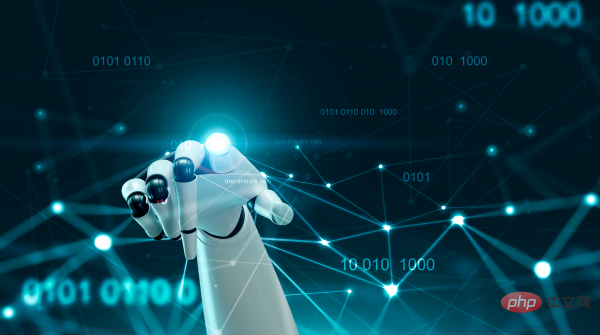 AI客服替代优势尽显 需求匹配与普及应用尚待时日Apr 12, 2023 pm 07:34 PM
AI客服替代优势尽显 需求匹配与普及应用尚待时日Apr 12, 2023 pm 07:34 PM从人工呼叫中心时代,经历了IVR流程设计、在线客服系统等的应用,到已经发展至如今的人工智能(AI)客服。作为服务客户的重要窗口,客服行业始终站在时代前端,不断利用新科技发展新生产力,向着高效率化、高品质化、高服务化以及个性化、全天候客户服务迈进。伴随着客户人群、数量的增多,以及人工服务成本的快速增加,如何利用人工智能、大数据等新一代信息科技,促进各行业的客户服务中心从劳动密集型向智能化、精细化、精细化的技术转型升级,已成为摆在诸多行业面前的重要问题。得益于人工智能技术不断进步与场景化应用的快速
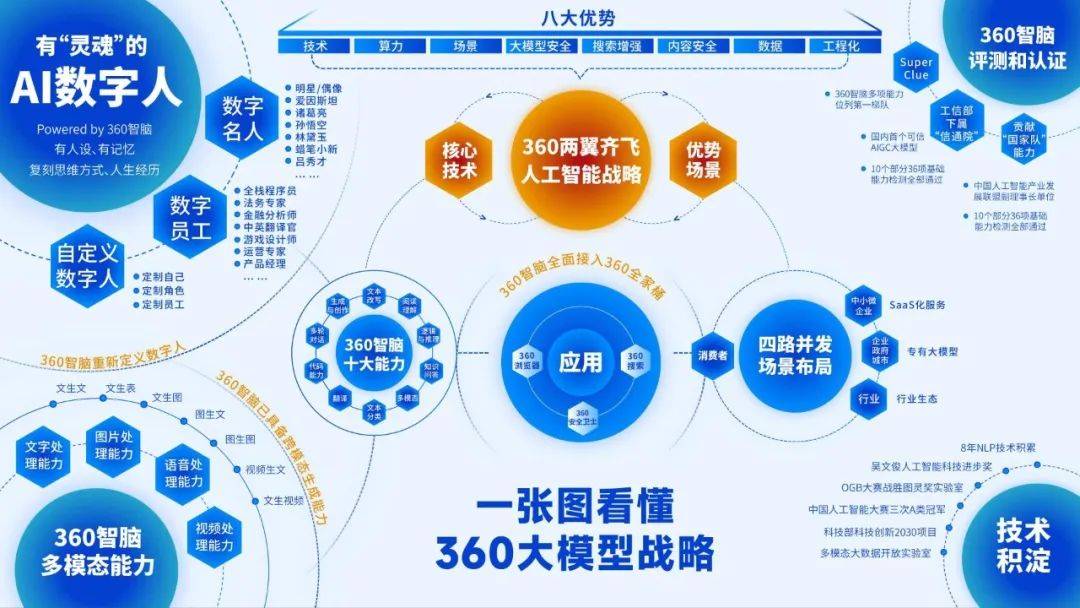 AI技术加速迭代:周鸿祎视角下的大模型战略Jun 15, 2023 pm 02:25 PM
AI技术加速迭代:周鸿祎视角下的大模型战略Jun 15, 2023 pm 02:25 PM今年以来,360集团创始人周鸿祎在所有公开场合的讲话都离不开一个话题,那就是人工智能大模型。他曾自称“GPT的布道者”,对ChatGPT取得的突破赞不绝口,更是坚定看好由此产生的AI技术迭代。作为一个擅于表达的明星企业家,周鸿祎的演讲往往妙语连珠,所以他的“布道”也创造过很多热点话题,确实为AI大模型添了一把火。但对周鸿祎而言,光做意见领袖还不够,外界更关心他执掌的360公司如何应对这波AI新浪潮。事实上,在360内部,周鸿祎也早已掀起一场全员变革,4月份,他发出内部信,要求360每一位员工、每
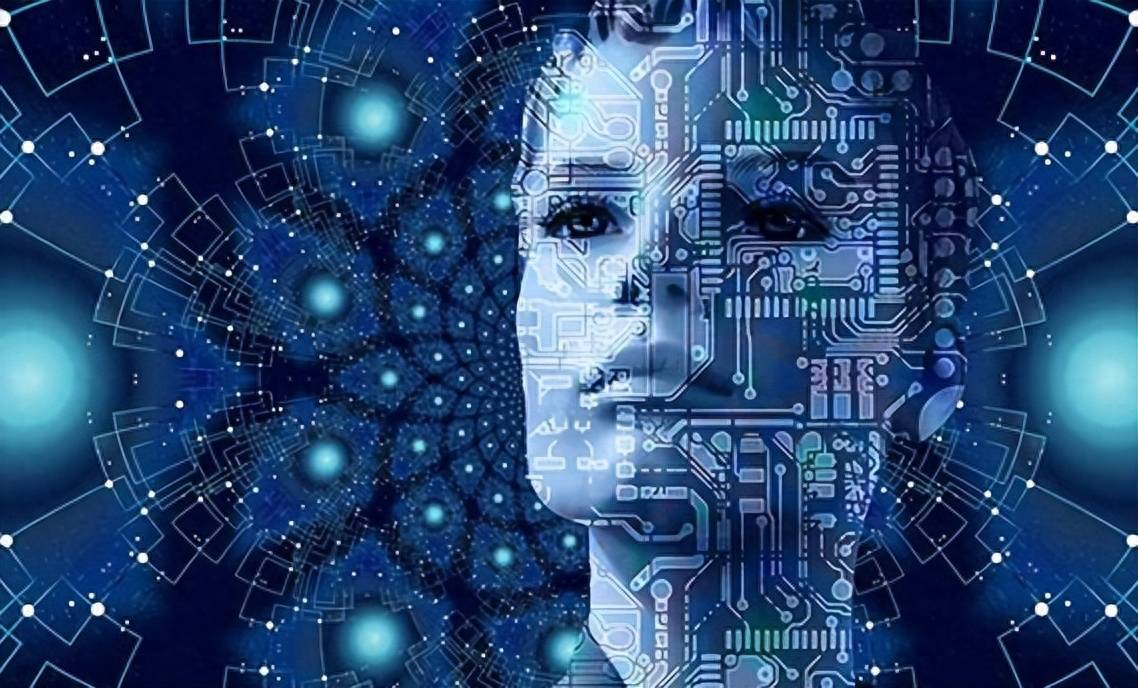 为什么说信息化平权是AI给人类最重要的积极意义?探索未来的故事Sep 21, 2023 pm 06:21 PM
为什么说信息化平权是AI给人类最重要的积极意义?探索未来的故事Sep 21, 2023 pm 06:21 PM在一个充满未来科技的世界中,人工智能已经成为人类生活中必不可少的助手。然而,人工智能不仅仅是为了方便我们的生活,它还以一种悄然存在的方式改变着人类社会的结构和运行。其中最重要的积极意义之一就是信息平等化消除数字鸿沟,让每个人都能平等享受科技带来的便利在当前数字化时代,信息化已经成为推动社会发展的重要力量。然而,我们也面临着一个现实问题,即存在着数字鸿沟,导致一部分人无法享受到科技所带来的便利。因此,信息化平权显得尤为重要,它能够消除数字鸿沟,让每个人都能平等分享科技发展的成果,实现社会的全面进步


Hot AI Tools

Undresser.AI Undress
AI-powered app for creating realistic nude photos

AI Clothes Remover
Online AI tool for removing clothes from photos.

Undress AI Tool
Undress images for free

Clothoff.io
AI clothes remover

AI Hentai Generator
Generate AI Hentai for free.

Hot Article

Hot Tools

EditPlus Chinese cracked version
Small size, syntax highlighting, does not support code prompt function

Safe Exam Browser
Safe Exam Browser is a secure browser environment for taking online exams securely. This software turns any computer into a secure workstation. It controls access to any utility and prevents students from using unauthorized resources.

Dreamweaver CS6
Visual web development tools

SublimeText3 Linux new version
SublimeText3 Linux latest version

mPDF
mPDF is a PHP library that can generate PDF files from UTF-8 encoded HTML. The original author, Ian Back, wrote mPDF to output PDF files "on the fly" from his website and handle different languages. It is slower than original scripts like HTML2FPDF and produces larger files when using Unicode fonts, but supports CSS styles etc. and has a lot of enhancements. Supports almost all languages, including RTL (Arabic and Hebrew) and CJK (Chinese, Japanese and Korean). Supports nested block-level elements (such as P, DIV),






